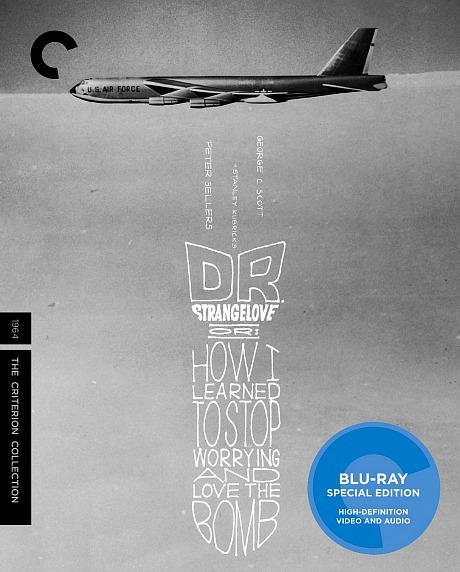Whenever Criterion re-scans a film in 4K for a fresh Bluray, I’m fairly confident that one of two things will happen. One, the result will appear fuller, richer and more visually detailed than what previous Bluray versions have delivered. (I’ve definitely noticed this with Criterion’s 4K-scanned Blurays of The Manchurian Candidate and The Graduate.) Or two, the film will look somewhat darker and will thereby obscure visual elements that were plain as day in previous versions, as Criterion did with their Only Angels Have Wings Bluray. But recently a different kind of reaction was posted by DVD Beaver‘s Gary Tooze in a review of Criterion’s 4K-scanned Dr. Strangelove Bluray, which pops on 6.28.

Essentially Tooze has said that while you might notice improvements while watching the Strangelove Bluray “in motion”, for some reason this difference isn’t evident in the frame captures. I’m sorry but that gives me concern. When I buy a new Bluray I want a clear “bump” — an unmistakable realization that I own a better-looking Bluray of a film than has ever been available before. So why, if there’s a bump contained in Criterion’s Strangelove, isn’t it noticable in the stills? Because the renderings are too subtle, apparently.
By all means let’s “reserve judgment until all the facts are in,” as Gen. Buck Turgidson said to President Merkin Muffley, but I don’t want to have to inspect a Bluray with a Sherlock Holmes magnifying glass and a fine tooth comb to realize it’s an improvement. I want the quality of the thing to grab me by the lapels.
Tooze: “Criterion’s Dr. Strangelove Bluray is cited as a ‘restored 4K digital transfer’ and while we have been able to identify fairly large differences in 4K or 4K ‘restorations’ vs. 2K Blu-ray transfers in the past, we can’t see similar in the static captures of the Criterion as compared to the 2009 Sony 1080P.
And yet the improvements “are visible in-motion when I played both directly beside each other,” Tooze writes. “The grain seems supported to a higher level and the Criterion Bluray is more technically robust with a higher bitrate. It is likewise in the 1.66:1 aspect ratio and you can see the similarities by toggling between the large linked captures. Because this doesn’t identify the differences in-motion, we have only compared 4 captures of the two Blu-ray packages.”
